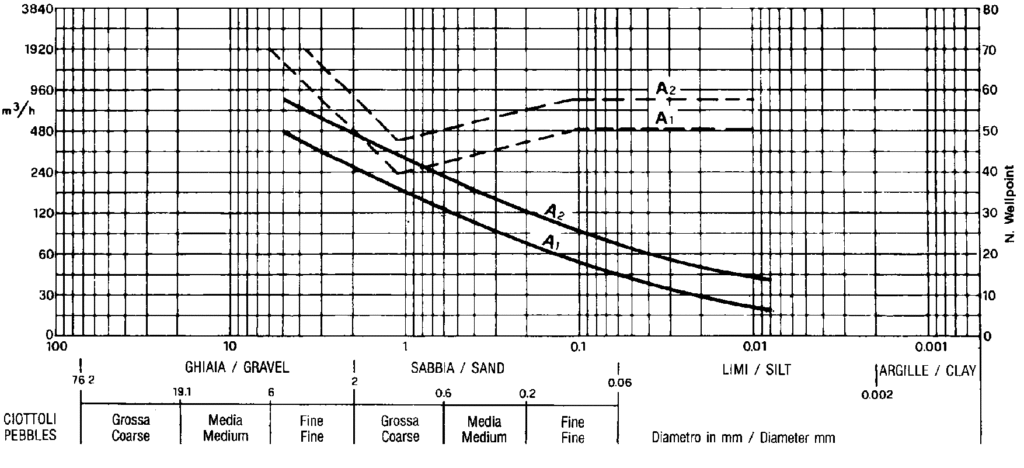
Ratio of permeability and number of Wellpoints
The extraction rate of the wellpoint system in sandy soils increases proportionally with the increase in the permeability value. It could therefore mean that the number of wellpoints must proportionally increase. But, from the practical experiences, it has been seen that, within certain limits, as the permeability of the soil increases, the number of wellpoints necessary for drainage can even decrease. Several drainage experiments were carried out, with the same wellpoint system, on two homogeneous sandy soils characterized by a different permeability value. The two types of sand are indicated in the granulometric diagram.
With the same drained surface and the same sag, the drainage of the sand with higher permeability required a lower number of wellpoints. The following results were thus confirmed:
1) the same wellpoint filters if used on sands with different permeability and different flow rates;
2) wellpoint filters of different types (different diameters and different theoretical flow rates) in the same sand emit practically the same flow rate.

In the coarser sands, the increase in flow rate to be extracted with the system is evidently compensated by the increase in unit flow rate of the wellpoint filters. Therefore, within certain particle sizes, while the flow rate of the wellpoints increases with permeability, the number of wellpoints decreases, as shown in the graph.


